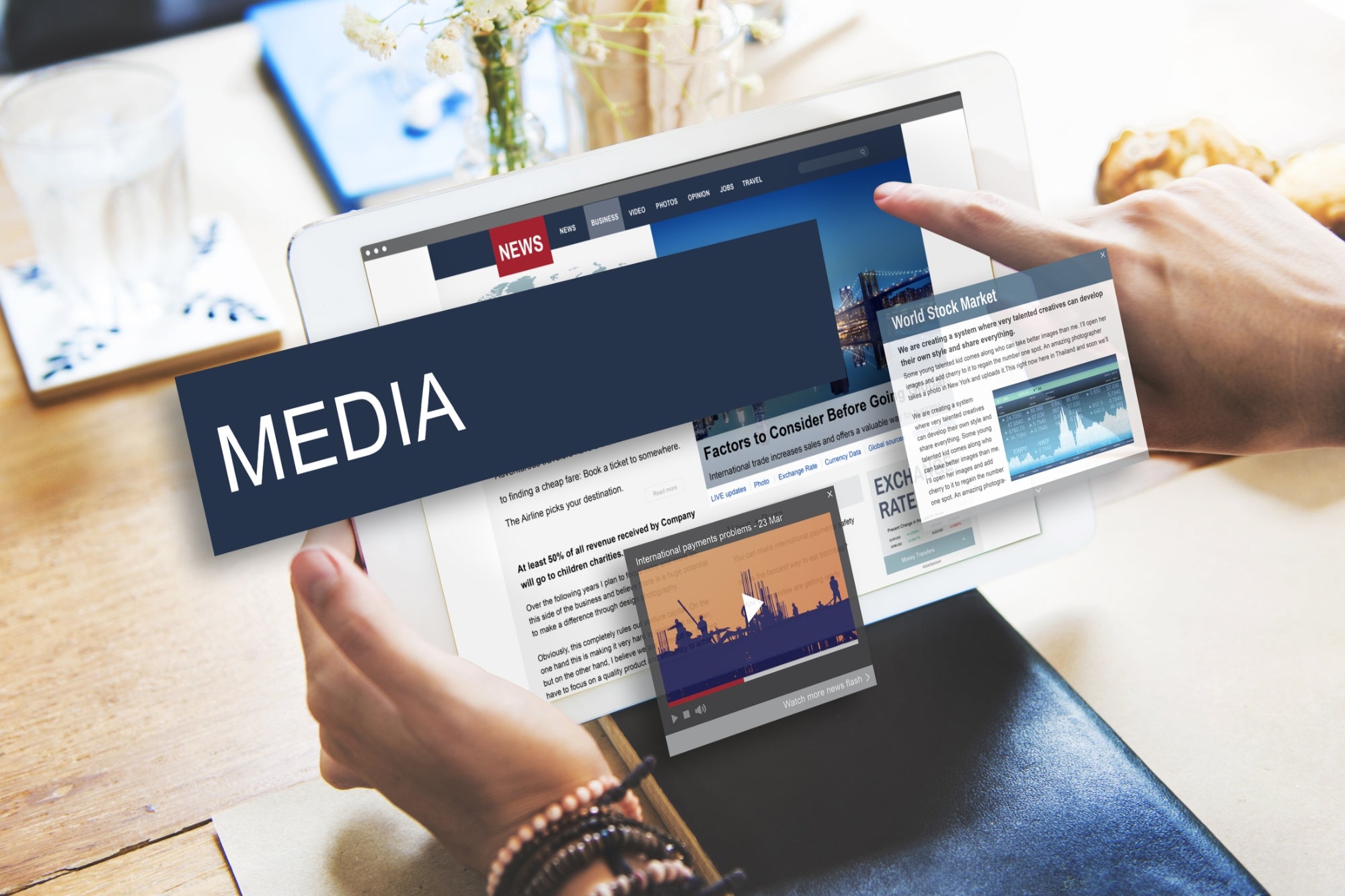AFFILIATE MARKETING
3 Ways Direct-to-Consumer Brands Can Leverage Media Coverage

Opinions expressed by Entrepreneur contributors are their own.
The digital marketing landscape has undergone a drastic shift. No longer can marketers rely on traditional marketing channels of search and social. The costs are rising, and profit margins are diminishing. Given this, DTC brands will find it daunting to capture high lifetime value (LTV) customers, and if they do, there is no guarantee of any long-term, repeatable business. This is where media coverage, including PR, comes to the rescue for DTC brands. And it is intensely competitive. The three top ways in which brands can leverage media coverage are below.
Spread the link
The link here is a reference for affiliate marketing. Affiliate marketing is a supplement to public relations. The success stories of DTC brands such as Casper (explored in the next section) display the power of affiliate marketing.
Affiliate marketing goes a long way in helping you to reach your target audience. And the best part? It occurs at every stage of the customer journey. Another aspect is that you only pay for measurable results in affiliate marketing, making it a low-risk method for DTC brands to generate leads and traffic and fuel sales volumes.
What is affiliate marketing? And how does it work?
Affiliate marketing is a performance-based advertising method. In this, an individual or company (or a network) gets to earn a commission by redirecting new visitors and customers to a business website. Essentially, a brand promotes a product or service and leaves a link to that offer. Content creators such as bloggers and social media influencers often use this method on most platforms. Also, affiliate marketing entails signing up with a company or network.
Through this network, DTC brands get to widen their reach and visibility. And when someone buys or executes the desired action using the network, the network gets paid. There are several affiliate networks out there. The few common ones are:
-
Clickbank.com
-
MaxBounty.com
-
JVZoo.com
-
CommissionJunction.com
The stats on affiliate marketing
Note that 21 percent of the higher average order value of sales happens via affiliate marketing. About 16 percent of all e-commerce sales in the U.S. are generated through affiliates. And around 58 percent of the higher annual customer revenue happens via affiliate marketing. With good reason, there are more than a few benefits to be gained from affiliate marketing. Affiliate marketing generated $6.8 billion in revenue in 2020 alone. So, there’s proof to the pudding.
Related: An Affiliate-Marketing Program Might Be the Perfect Move
Monitoring SEO and other search trends
Today, publishers are very savvy and enthusiastic about SEO trends. Thanks to Google, the platform has transformed how it surfaces product reviews. The reason is that today’s consumers Google a product before making a purchase. They do so to avail themselves of the best possible evaluations that are easy to find. These savvy brands then serve as a public relations avenue by helping journalists to create excellent reviews. Hence, knowing the search payoff beforehand is worth the extra effort for DTC brands to jump on the bandwagon.
However, Google does more than just present reviews. The search engine also looks at the article for expert knowledge. It uses that information to find comparable products and quantitative measurements to gauge how the product or service measures up. The work for the DTC brands begins with samples. The brands usually send samples to journalists with tip sheets to help them write fact-based, authoritative articles to improve their visibility. It is these articles that, once they appear in the Google search engine, make for an excellent PR strategy for the DTC brand.
Related: All You Need to Know About Google Trends to Grow Your Business
The case of Casper
Casper, a U.S.-based mattress brand, has set up search-specific landing pages. It has also funnelled Adwords money to its website to elevate its position in the market. The result? Casper gets a critical share of the 550,000-plus monthly mattress Google searches. What’s more, Casper tops the Google search results for several mattress-related terms. Right from a reviews landing page to a duvets inserts landing page, Casper has, for itself, a customized SEO flytrap page. So, virtually any mattress-related keyword that users type into Google, their purchase intent will present the Casper website.
To leverage and up the SEO game, DTC brands can use several SEO tools to optimize their websites. Some of the more notable are:
-
Hubspot Website Grader
-
Google Search Console
-
Google Analytics
-
Ahrefs
-
Semrush
Leverage the power of social media
Another way to attract eyeballs towards your brand is to leverage social media advertising. So, if a DTC brand receives media coverage, it should share the news with its fans and followers. And these are typically found on social media brand accounts. Social media is an excellent way of racing out to new customers. A word of caution there — do not stop here!
You can also leverage other powerful aspects within the PR spectrum. These are reviews and personal recommendations (digital word-of-mouth marketing methods). Your regular and known customers get updated on your press coverage. But, they can do more than just that. Often, they share the link with friends and family via WhatsApp and other applications. What this does is provide multifold influence from an existing customer. It makes for an excellent way of converting new customers. Most importantly, your owned content is crucial. So share the coverage details on the blog site and link back to the article.
Remember, consumers prefer and trust a well-rounded review that mentions other brands. So make sure that the coverage is not pushy or overselling. This is especially true for the younger generation, as they are more media-savvy. They belong to an era where reviews are a daily social media staple.
Related: 5 Low-Budget Marketing Ideas for Bootstrapped Startups
Parting words
Media is the name of the game. As seen from above, it can take several forms. DTC brands need to hone and forge collaborative pursuits with the media and audiences to break out of the competitive clutter and stand out among their peers. This online presence, PR included, can then make or break your brand. Additionally, DTC brands should also consider leveraging the power of media to be at the top of trends.
Source link
AFFILIATE MARKETING
Unlock Simplified, Pro-grade Design Capabilities with Ashampoo 3D CAD Professional 11

Disclosure: Our goal is to feature products and services that we think you’ll find interesting and useful. If you purchase them, Entrepreneur may get a small share of the revenue from the sale from our commerce partners.
For entrepreneurs and design professionals who are looking to elevate their projects, Ashampoo 3D CAD Professional 11 offers a powerful yet user-friendly solution that combines precision, versatility, and an extensive object library—all for just $39.99 (reg. $330).
Whether you’re a seasoned architect or a DIY enthusiast, this software offers a seamless blend of simplicity and sophistication. Its intuitive interface guides you through every step of the design process, from sketching floor plans to visualizing your space in stunning 3D.
This Windows-only software is designed to make your workflow more efficient and your designs more precise. It has a host of powerful tools and features that simplify complex tasks. For instance, the program offers dedicated input modes for walls, windows, and doors, allowing you to quickly and accurately define key elements of your project. Additionally, numerical editing tools provide even greater precision, ensuring that every measurement and modification is spot on.
Ashampoo 3D CAD Professional 11 has auto-save functionality and reminders to save your work manually, so you never have to worry about losing progress. The context menu supports cut, copy, and paste functions, making it easier to manage different elements of your design. With powerful floor plan analysis and correction features, you can quickly identify and address any issues before they become problems.
It has extensive object catalogs that provide a wide range of 3D objects and more than 250 ready-to-use object groups. From pre-designed garages and kitchen lines to garden houses and saunas, these objects make adding detail and realism to your projects easy. You can also create your own catalog directories and use them directly in the software, customizing your designs to fit your unique vision.
With more than 20 million users, this software provides all the tools you need to help bring your vision to life.
Get a lifetime license to Ashampoo 3D CAD Professional 11 now and pay just $39.99 (reg. $330) for a limited time.
StackSocial prices subject to change.
AFFILIATE MARKETING
4 Tips for Building Stronger Relationships Between IT and Non-Technical Teams

Opinions expressed by Entrepreneur contributors are their own.
Most companies have some form of dedicated IT management. According to a workforce survey, the common IT to non-technical staff ratio is typically around 4% of all personnel.
These IT individuals and departments often need to communicate with the other staffers throughout a company. From basic day-to-day activities to long-term collaborations, meeting deadlines and maintaining security, it’s important that the relationship between IT and the non-technical workforce is not just existent but effective.
If you’re aware of a lack of quality in your IT-related inter-departmental collaborations, here are four ways to enhance communication and build better professional relationships between technical and non-technical teams.
1. Establish and promote healthy communication
Communication cannot be overlooked in any business setting. As the workforce becomes more geographically diversified by distance and time zones, it’s important to maintain communication, not just with teams but between departments. This is ground zero, especially in an isolated area like IT.
One way to enhance communication is through regular cross-team meetings. Many companies hold recurring meetings where everyone comes together to hear company-wide updates and generally realign themselves. If the thought of a full company meeting sounds like a mammoth, intimidating and time-sucking use of resources, never fear. There are multiple ways you can implement this concept efficiently.
For instance, Zappos holds its well-known all-hands meetings three times a year. Spacing out these larger communal moments helps make them special.
If meeting is a problem in any quantity, you can go a different route: pre-recorded messages. If you choose this option, though, be warned that simple video messaging can become just as confusing and lengthy as a meeting. Instead, look for tools that help you send purposeful, value-centered messages.
Marketing platform Drift, for instance, used the communications tool Zight to improve its internal communication. The company used screen recorder technology to send annotated, knowledge-based videos to their employees. This organized and enhanced the purpose of each message, making it easier to reference later on without rewatching the entire thing.
The takeaway? Invest in some form of healthy cross-departmental communication that fits with your workflow.
2. Use jargon-free language
Removing jargon and technical terms from basic inter-departmental communication starts at the top. IT leaders must demonstrate how to remove dense language when talking, recording, typing and otherwise engaging with coworkers.
This isn’t just because leading by example is effective. It’s also because workplace jargon often finds its largest adherents in the upper echelons of a business. One study from MyPerfectResume found that 33% of those asked considered upper management to be the most likely to overuse workplace jargon.
Even worse? A third of those asked had also used jargon that they didn’t even understand. Use jargon-free language. It keeps communication transparent and avoids peer pressure and embarrassment from undermining effective understanding between IT and other teams.
Related: Here’s Why You Absolutely Have to Stop Using Jargon at Work
3. Bridge knowledge gaps with cross-functional training
Specialization and niche knowledge are defining factors for IT teams. Tech workers’ value comes from their ability to bridge the gap between humans and machines. However, this expertise isn’t as effective if the communication gap between IT staff and other personnel widens too far.
One way to keep all staff on the same playing field is to engage in cross-functional training. This is the process of educating employees from various departments in disciplines that are complementary to their own focus. It emphasizes shared knowledge and helps teams both respect and understand their respective duties in the larger context of business operations.
Google has mastered the art of cross-departmental training. On the one hand, the company famously used its whisper courses — a series of micro-lessons in email form — to teach small teamwork lessons. In addition, the search engine giant encourages employee-to-employee training. This shares knowledge in a peer-to-peer fashion and maintains a culture of learning.
Again, the takeaway here is that you don’t have to follow a formula for cross-departmental training. Find something that works for your setup, and then invest in it.
4. Cultivate a culture of inclusivity
Inclusivity is a common workplace culture goal. It emphasizes making all members of a workforce feel welcome. It seeks to embrace gender, age and other demographic differences and to incorporate the strengths of each individual and team into a company’s operations.
This is a powerful way to keep IT and non-technical personnel connected and respectful of one another’s contributions. As a central focus of how a company operates, an emphasis on empathy and respect helps keep those all-important communication channels open and healthy.
No company has demonstrated genuine, effective inclusivity in business activity quite as well as Pixar. The media company is famous for its ability to develop high-quality ideas and, at the same time, make sure everyone feels welcome and part of the conversation.
The company’s “Notes Days” are a poignant example. These are days when the entire company shuts down and comes together to collectively brainstorm. The result is some of the best inter-departmental collaboration in modern history.
If you want your tech and non-tech teams to connect, make them feel included.
Related: How to Build an Inclusive Culture That Permeates All Levels of the Organization
Breaking down barriers between IT and the rest of the professional work world
The IT department has become an integral part of most modern businesses. But it cannot operate in a vacuum. Miscommunications can lead to confused expectations, missed deadlines and even compromised safety and security.
It’s essential that leaders make an effort to align their IT and non-technical teams. This keeps everyone informed and up-to-date as you work together to achieve the same goal as a business.
AFFILIATE MARKETING
5 Ways Kamala Harris Can Support The Franchise Community

Opinions expressed by Entrepreneur contributors are their own.
The five weeks between the Republican and Democratic conventions could have been a lifetime, as a brand-new Democratic ticket formed in record speed. As always, the International Franchise Association (IFA) is neutral in presidential elections and we will work with whoever is in the White House for the betterment of our model. Just as we were in Milwaukee for the RNC, we were on the ground in Chicago, educating candidates and campaigns about all the good franchising provides, especially for minority-owned businesses.
More highlights from championing franchising with lawmakers in Chicago at the #DNC2024. IFA is proud to work with members across the aisle on policies that support the franchise business model and its 9M employees in the U.S. pic.twitter.com/vexxskHpuK
— IFA (@Franchising411) August 21, 2024
Like many Americans, the franchise community is interested in learning more about Vice President Harris’ vision and policy priorities, which she characterized in her acceptance speech as an Opportunity Agenda. It is encouraging that one of her early commercials features her time working at McDonald’s. In fact, if elected, Harris, along with her husband Doug Emhoff, will share a common thread with the 1 in 8 Americans
who have worked at McDonald’s. To genuinely support the franchise business model, here are five concrete ways Vice President Harris can appeal to the franchise community.
Be a champion for franchising
First, Vice President Harris should be a champion for franchising and use every day on the campaign trail to visit franchises and meet their employees in swing states — and everywhere in between. Doing so will unlock franchising as a component of the Opportunity Agenda, including the unique benefits of franchising for all stakeholders involved in the model.
Those stakeholders are substantial — from the nearly 9 million employees who work for America’s 800,000 franchise businesses (and earn higher wages and better benefits than non-franchised employees) to the franchise owners themselves, who are more diverse in race and gender than non-franchises.
Abandon an expanded joint employer rule
Second, Vice President Harris talked at the DNC about working with business and labor. Yet, one of labor’s top priorities has been a joint employer rule that would effectively destroy franchising. A Harris administration that wants to support small business creation must abandon efforts to implement an expanded joint employer rule.
Bipartisan majorities in congress and a federal court have rejected expanding the joint employer test to include reserved and indirect control. Even Democratic supermajorities in the California legislature, and her home-state Governor Gavin Newsom, rejected joint employer liability. This created a pathway to negotiate a bill with organized labor that preserved franchisee equity in their business, and creating predictable increases in the minimum wage.
Call for pro-small business tax policies
Third, Vice President Harris should call for pro-small business tax policies, given the expired and expiring provisions of the Tax Cuts & Jobs Act (TCJA). These include extending the qualified business income deduction (QBID), also known as the section 199A deduction, and restoring a pro-growth interest deductibility standard that expired at the end of 2022.
Extending the 199A deduction, along with passing the bipartisan Tax Relief for American Families and Workers Act — which garnered overwhelming bipartisan support in the House this year — would greatly benefit franchise owners. This legislation would increase the amount of interest owners can deduct from their income taxes, offer temporary bonus depreciation for the purchase of equipment and short-lived capital assets and include other pro-business and pro-worker provisions.
These actions would provide small business entrepreneurs with a competitive edge over large corporations and demonstrate that Vice President Harris is committed to addressing the needs of the small business community. She can chart a new path and extend an open hand to the business community by putting the politics aside and commit to extending a policy they have come to rely on. Without action, every business owner in country wakes up on January 1, 2026, facing a tax increase.
Increase lending limits at the SBA
Fourth, increase lending limits at the Small Business Association (SBA) and boost access to the 7(a) Working Capital Pilot (WCP) program. During her acceptance speech, Harris pledged to, “provide access to capital for small-business owners and entrepreneurs and founders.” Launched earlier this year, WCP is a line of credit product that features an annual guaranty fee structure that works to offer greater flexibility than a traditional term loan to meet specific business needs.
Accessing capital is increasingly challenging in such a high-interest rate environment. The SBA pitched the concept as a means of breaking down barriers seeking to start their own pathway to entrepreneurship, where the franchise model is poised to continue playing a major role.
Outline a future for the Federal Trade Commission
Finally, Harris should outline a future for the Federal Trade Commission (FTC) that includes a modernization of the Franchise Rule, a federal regulation solely enforced by the FTC that governs the sale of a franchise. Currently under review by the FTC, the Franchise Rule hasn’t been updated since 2007 — the same year the first iPhone was introduced.
Research published in the Wall Street Journal showed it took more than 20 years of education to understand a Franchise Disclosure Document (FDD), and a federal investigation found many prospective franchisees did not read the disclosures at all. This needs to change, especially during the pre-sale process when a prospective franchisee is deciding whether to invest significant financial resources in a franchise.
A Harris administration would be wise to course-correct the FTC to foster entrepreneurial development in franchising and double-down on the true mission of the FTC — to protect consumers and prospective franchisees. The franchise business model encourages workforce development and small business formulation in local communities, we look forward to working with any administration and any political party toward that important goal.
Related: Is Franchising Right For You? Ask Yourself These 9 Questions to Find Out.
Matt Haller is the President and CEO of the International Franchise Association (IFA). Greg Flynn is the Founder, Chairman, and CEO of Flynn Group and Flynn Properties, and an IFA Board Member. With 2,700+ Applebee’s, Taco Bells, Paneras, Arby’s, Pizza Huts, Wendy’s and Planet Fitness units generating $4.7+ billion in sales and employing 75,000+ people in 44 states and 3 countries, Flynn Group is the largest franchise operator in the world.
-

 SEO7 days ago
SEO7 days agoGoogle’s Revamped Documentation Shows 4 Reasons To Refresh Content
-
SEARCHENGINES5 days ago
Daily Search Forum Recap: August 26, 2024
-

 SEARCHENGINES7 days ago
SEARCHENGINES7 days agoGoogle Ranking Bug Fixed, August Core Update Swings, AI Overviews, Google Ads Bug & More
-
SEARCHENGINES4 days ago
Daily Search Forum Recap: August 27, 2024
-

 WORDPRESS7 days ago
WORDPRESS7 days agoHow to Secure Your WordPress Store
-

 AFFILIATE MARKETING7 days ago
AFFILIATE MARKETING7 days agoBusiness Owners are Batting 1,000 With This All-in-One Management Hub
-

 SEARCHENGINES6 days ago
SEARCHENGINES6 days agoGoogle Migrating All To Google Merchant Center Next By September
-

 WORDPRESS5 days ago
WORDPRESS5 days ago9 Best Elementor Alternatives 2024 (Faster Page Builders)















You must be logged in to post a comment Login